
If there’s one thing that Disney Parks fans love, it’s a good story.
There’s nothing more sensational for Imagineering insiders than to step into a new world. Whether exploring the exotic river delta of Adventureland, traveling through time in Epcot classics, or returning to the historically haunted Hollywood Tower Hotel, a deeply ingrained and thoughtfully crafted story – a sense of place, plot, and purpose – tends to be the thing that sets a Disney attraction, land, or theme park apart from the rest.
And here at Theme Park Tourist, we even called out Disney for its boardwalks, backlots, and carnivals; “creative cop-out” lands that seem to lack the storytelling and heart (and budget) that Disney fans take such pride in. But maybe we don’t have the full story… Today, let’s take a tour through Chester & Hester’s Dino-Rama, said by some to be the worst Disney Parks land ever! The tale of this “cheap-out” carnival supposedly built on an old bit of Animal Kingdom parking lot may not be exactly what it seems…
The Disney difference
Image: Disney
Back in the early days of Disney Imagineering, romanticism was key. Think of Adventureland or Frontierland. Neither could be traced to a pin placement on a map; neither was a recreation of any real place; neither was even traceable to a specific year. Rather, they were created by Walt’s early designers as habitable movie sets; places that “never were, but always will be;” living embodiments of pop culture’s imagery of “adventure” or the frontier.
By the early 1990s – as designers gathered their plans for a fourth park at Walt Disney World – their M.O. had changed. Seemingly in response to the beige studio parks that they themselves had pioneered (and had quickly spread around the globe), Disney’s next park would be different. Led by Joe Rohde, Imagineers began to pencil in a park featuring animals.
Image: Disney
One lingering question around the new Disney’s Wild Animal Kingdom park: What would differentiate it from a zoo? After all, guests at Walt Disney World may come from around the globe, but most visitors have a zoo little more than a day trip away… and even the world’s best zoos would be unlikely to command the kind of admission price Disney’s park would ask for. The answer? This new park would recreate not just the natural world, but the civilizations shaped by it. Disney’s Wild Animal Kingdom would be made of photorealistic, lived-in lands transporting guests to far-flung corners of the globe where authentic exploration and animal encounters would await...
And while Disneyland and Magic Kingdom transport guests to imagined, romanticized times and places, the lands at Animal Kingdom would instead be shaped by time, sending guests around the world to see how humans had developed within and alongside wildlife in lands that look real enough to be postcards.
Image: Disney
Africa would come to life as the village of Harambe and the savannah beyond, where ecotourism wildlife safaris would be the village’s (and park’s) signature attraction.
Discovery Island stood as an artisan village; a hub of the celebration of nature, built into the winding root systems of the towering, central Tree of Life.
Image: Disney
Asia would be embodied in Anadapur, a riverside Kingdom whose misty ruins now served as a wildlife sanctuary, including a river ride through animal habitats.
And so it would go for two more lands, which would take guests to places no zoo would dare go...
Ancient animals... almost
Image: Disney
As we know from Michael Eisner’s opening day dedication, Disney’s Animal Kingdom was eventually organized by a guiding principle that it celebrate animals “real, ancient, and imagined.” Those latter two, it was thought, would be Disney’s coup; the difference that would ensure Disney’s Animal Kingdom was “Nahtazū” (or at least, not just a zoo) in the eyes of the public.
In those concept plans, the park’s Africa, Asia, and Discovery Island would be joined by two others: the grounded Dinoland, U.S.A. and the ethereal Beastly Kingdom. While plenty has been said about the latter (including our in-depth and much-cited Possibilityland: Beastly Kingdom feature), fans sometimes forget that Dinoland is just as conceptually unique.
Even then, it was decided that Dinoland would be set somewhere in the United States; a once-sleepy desert town unexpectedly enlivened by the discovery of fossils, initiating a decades-long transformation into a… well… a tourist trap. In a clever set-up, that initial dino-discovery (plus a few decades of time) would’ve segmented the land in two, each featuring a significant ride.
Image: Disney
First, the fossil find would’ve drawn academics from around the country who slowly established the Dino Institute. Eventually, this field research group would construct the Dino Institute and – in the 1970s – its research museum.
Given that Imagineers originally intended each of the park’s lands to have its own “Kilimanjaro Safaris” equivalent, the Dino Institute would house Dinoland’s: a “time traveling” family attraction wherein guests would board Ankylosaurus shaped vehicles and travel to a prehistoric jungle (outdoors, behind the Institute showbuilding) to tour past Audio-Animatronic dinosaurs in their “natural” habitats.
Image: Disney
The second half of the land would belong to the locals who, spurred by the influx of grad students, would’ve restaged sleepy Diggs County as a roadside attraction of dinosaur “wonders,” including the towering Excavator - a steel roller coaster (cleverly disguised as wooden) rumbling through the town and passing “artisan”-made dinosaur sculptures (think reclaimed rusted metal sculptures) amid the long-since-emptied dig pits of the ‘50s, ‘60s, and ‘70s.
Image: Disney
Obviously, neither the Excavator nor the family safari came to be. Why? When guests stepped into Dinoland at Disney’s Animal Kingdom in 1999, the land resembled its original incarnation, but with at least a few notable changes… We’ll dig into the final Dinoland on the next page.
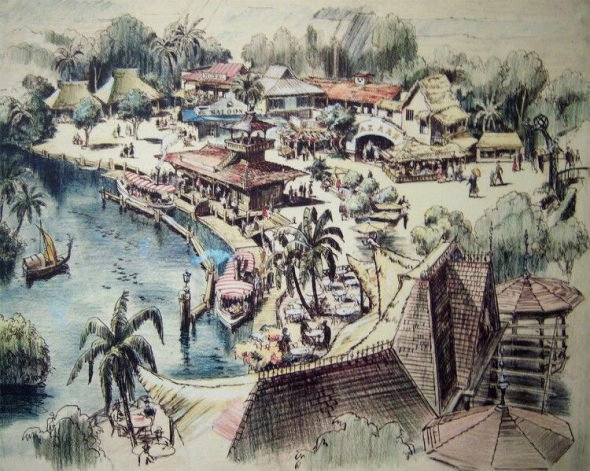
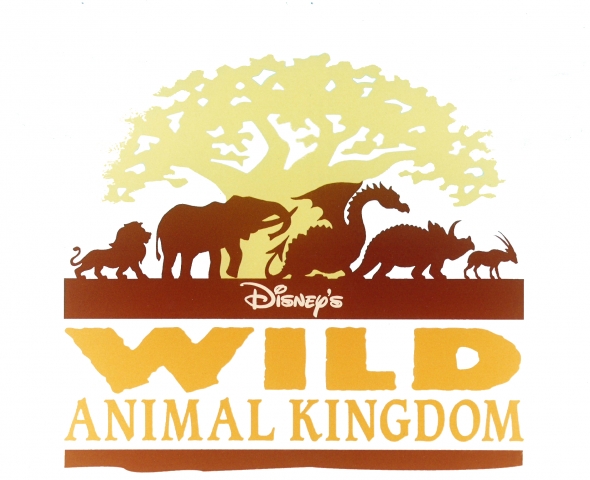
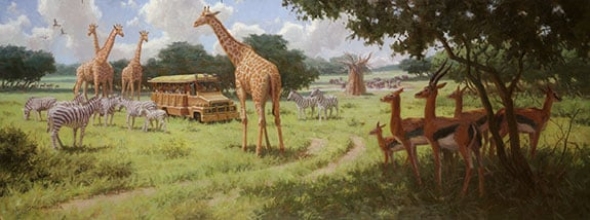
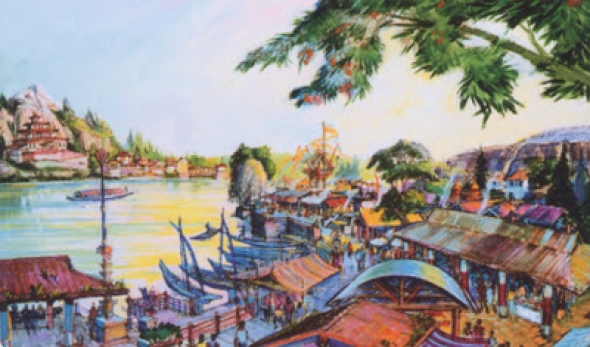
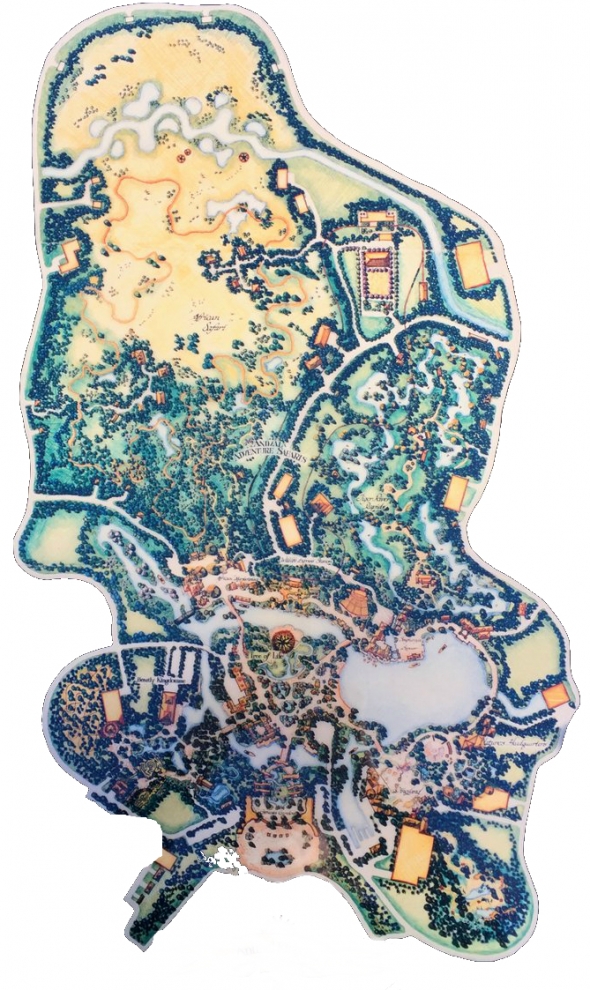
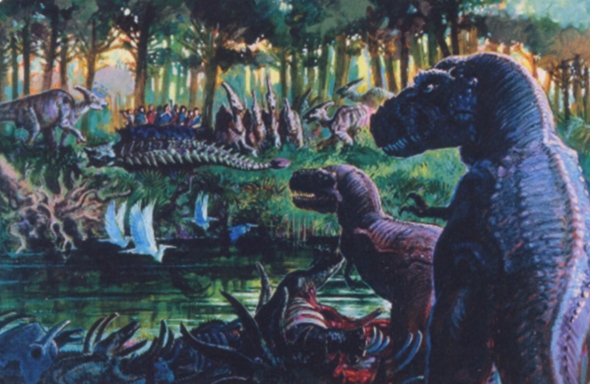
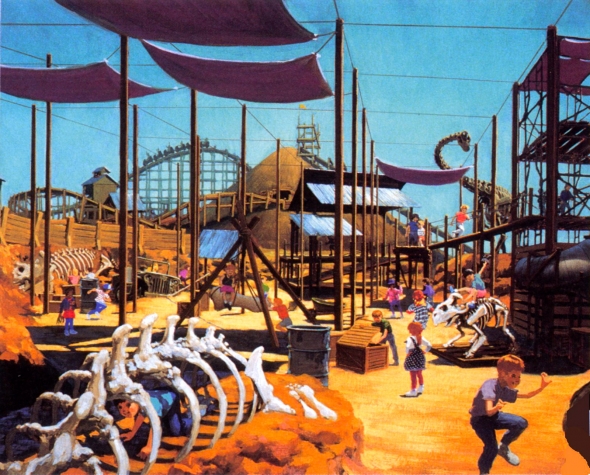
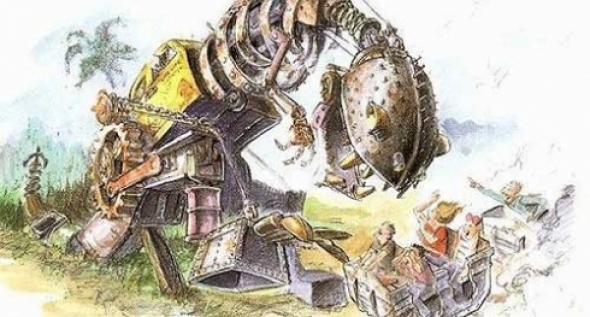

Comments
Perhaps I read the article wrong, but it sounded like you said Animal Kingdom opened in 1999, but it actually opened April 22, 1998, which was Earth Day that year.
Thanks for the comment, apologies for this error, it has now been updated in the article. Thanks for reading and kind regards.